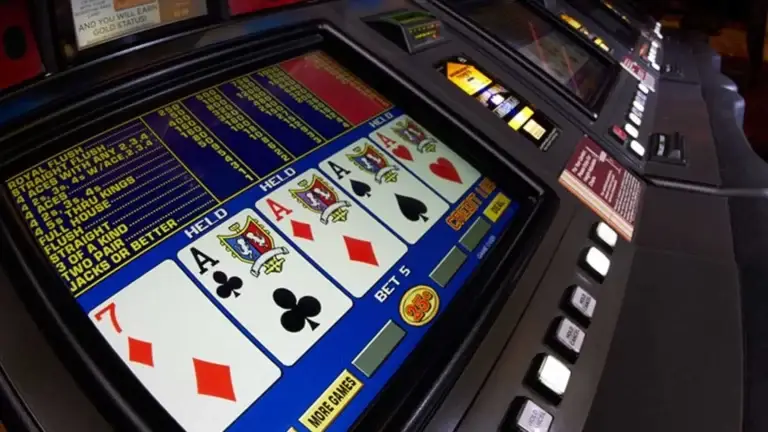Poker has long ceased to be just a card game – it has become a system with a clear hierarchy, strategic depth, and mathematically verified logic. Regardless of the format – Texas Hold’em, Omaha, or draw poker – each hand revolves around one question: who has the strongest hand. Therefore, knowledge of all poker combinations is a fundamental skill without which it is impossible to build a long-term strategy and effectively manage a bankroll.
From high card to royal flush: how the hierarchy of all poker combinations works
Poker combinations strictly adhere to an established hierarchy. Each subsequent sequence is stronger than the previous one, regardless of the rank of the cards involved. The logic is based on the probability of occurrence: the rarer the combination, the higher its rank. This principle is maintained in all game variations and determines the structure of bets on the preflop, flop, and river.
For example, all poker combinations start with the basic level – the high card. This is the minimum hand value where no pair matches, there are no sequences or suits. The card with the highest rank wins. Next come more complex and rare sets: pairs, three of a kind, straights, and so on – up to the royal flush, which is formed extremely rarely but instantly determines the fate of the pot.
Kicker and the influence of lower cards in borderline situations
Evaluating a poker hand often requires taking into account the so-called kicker – an additional card used to determine the winner in case of a tie in main combinations. For example, if both players have a pair of aces, the one with a king kicker wins, not the queen. This nuance affects the dynamics of bets and strategic decision-making. Players who can correctly assess the strength of all poker combinations considering the kicker are less likely to fall into the trap of overvaluing their hand and act more accurately. This skill is especially important when playing against opponents with a tight style, where the difference in the kicker can determine the outcome of an entire session.
How to correctly assess the strength of your hand in poker preflop
Before the community cards are revealed, players rely on their two hole cards. At this stage, it is possible to predict the potential of the hand. Strong starting hands – ace-king suited, two queens, a pair of tens – provide a good probability of building dominating sequences. However, all poker combinations in actual gameplay are formed on the flop, turn, and river. Therefore, it is important to consider not only the rank of the starting cards but also their compatibility, the possibility of forming a straight or a flush. The ability to read the board and anticipate hand prospects is the basis of tactical thinking in any discipline, including Texas Hold’em and Omaha.
All poker combinations: structure and frequency
In classic Texas Hold’em, there are 10 basic combinations. They must be memorized, not just as a list, but with a clear understanding of the logic behind their formation, strength, and frequency:
- High card. Formed when no other combination is made. The highest-ranking card wins.
- Pair. Two cards of the same rank. For example, two jacks.
- Two pairs. Two sets of two identical cards. For example, two tens and two threes.
- Three of a kind. Three identical cards. For example, three queens.
- Straight. Five consecutive cards of different suits. For example: 6-7-8-9-10.
- Flush. Five cards of the same suit, not in sequence. For example: hearts 2, 4, 7, 9, jack.
- Full house. A combination of three of a kind and a pair. For example: three nines and two fours.
- Four of a kind. Four cards of the same rank. For example: four kings.
- Straight flush. Five consecutive cards of the same suit. For example: 5-6-7-8-9 spades.
- Royal flush. Ace, king, queen, jack, ten of the same suit. The rarest and strongest combination.
These poker combinations form the backbone of all gameplay situations and determine the logic of trading and betting on all streets.
Strength of poker combinations: real examples
Hand strength is not an abstract concept but a factor that can be calculated in percentages. For example, the probability of hitting a flush on the river with four cards of the same suit on the flop is about 35%. At the same time, three of a kind beats two pairs in 73% of cases. Real calculations are often used on major platforms such as GGPoker, PokerStars, 888poker, where built-in calculators or HUD systems indicate the winning percentage of the current hand. These data not only help evaluate all poker combinations but also adjust behavior in specific situations. A player who has two pairs on the flop often loses to a straight formed on the turn. Such scenarios occur regularly, especially with deep stacks and when playing against experienced opponents who can catch draws.
Differences in combinations between Texas Hold’em and Omaha
In Texas Hold’em, a player uses two hole cards and three out of five community cards. In Omaha, four hole cards are used, but exactly two from the hand and three from the board must be applied to the combination. This rule changes the approach to hand building. For example, all poker combinations formed in Omaha require more precise planning because the possibilities of truly strong hands increase. Four of a kind, full house, or flush appear much more often in the game, especially in multi-way pots. Accordingly, the value of low hands – a pair or two pairs – decreases. In Omaha, one should aim for the nuts (the best possible hand on the board), otherwise, there is a high chance of losing to a stronger hand.
Bluff and poker combinations: the art of persuasion
The ability to demonstrate a strong hand is one of the most elegant elements of the game. Bluffing works when the opponent believes in the presence of a powerful sequence. Knowledge of all poker combinations allows using this technique rationally. On the river, one can make a large bet, simulating a straight or a flush, especially if the board allows it. For example, the appearance of a third card of the same suit may hint at a flush, even if there is only a pair in hand. This is where psychology comes into play, observing the opponent’s betting frequency, understanding their style. Bluffing requires a sense of timing, confidence, and situational analysis. At the same time, the player must clearly understand which real combinations are possible on the board and which of them it makes sense to represent to avoid suspicion.
The role of the flop, turn, and river in the dynamics of combinations
Each new street is not just adding a card but expanding potential scenarios. On the flop, a pair or a draw combination is possible. The turn can complete a flush or a straight, and the river decides everything. In practice, players often underestimate the strength of all poker combinations that form by the river. Hidden straights and full houses are particularly dangerous, as they may not be obvious at first glance. For example, a board of 8-9-10-K-K on the river may conceal four of a kind, a straight, two pairs, or even a full house, depending on the hole cards. Skillful analysis of each street considering probabilities helps to timely fold a hand or, conversely, increase pressure on the opponent.
Conclusion
Understanding how all poker combinations work distinguishes a novice from a systematic player. It is not just a ranking table but a working tool for analysis and decision-making. Accurate calculation, reading the board, understanding frequencies, and the strength of kickers – these details form the strategic foundation of the game. At any limit, in any format – from micro-limits to the final table of a live tournament – knowledge of combinations determines the success of decisions, especially in borderline spots.



